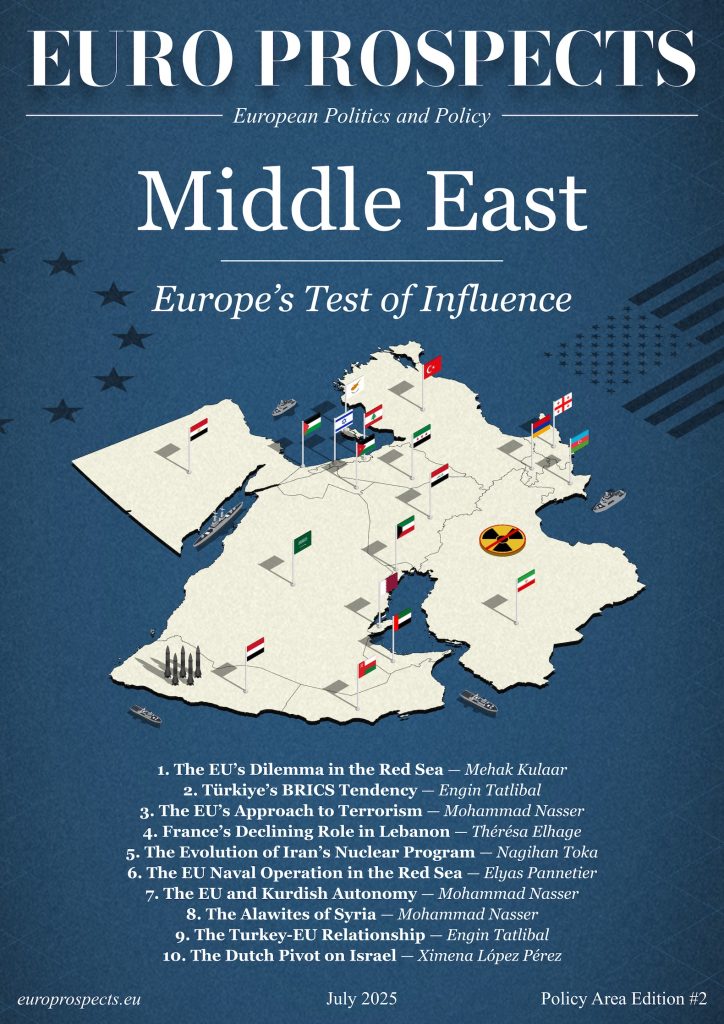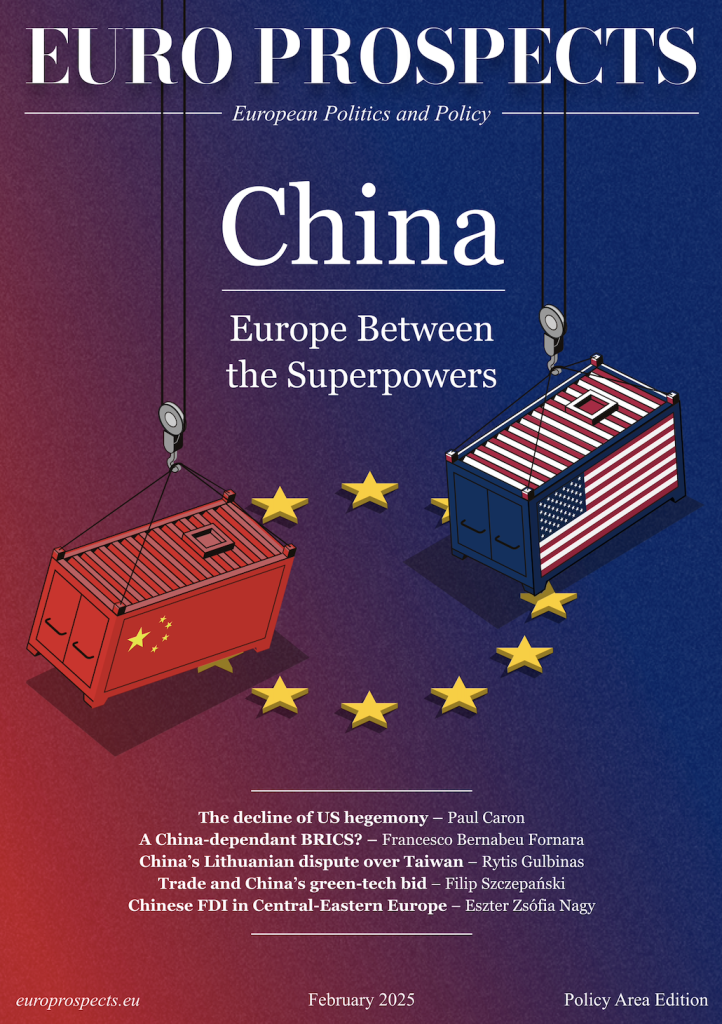
14 min read — Security | EU | Enlargement | Defence | Ukraine
Strength in Unity: Why Sectoral Integration Offers a Path to a More Secure Europe

The intensification of Russia’s illegal war of aggression on Ukraine has led to considerable changes in Europe’s security structure—not in the least by forcibly violating Ukraine’s territorial integrity and sovereignty which has undoubtedly affected the EU and its Member States. Testament to this has been the latter’s extraordinary responses: on the surface, the EU has decided to, for the first time ever, provide lethal aid to a country that is actively involved in conflict, all the while unprecedentedly adopting 15 separate packages of sanctions against Russia and increasing the number of EU candidate members—including now Ukraine, Moldova, and Georgia.
That said, before EU accession can occur, a long phrase of preparations are required. Included in it, is the need for the candidate state to negotiate with the European Commission how to harmonise itself within the full body of EU law and meet all the membership criteria. Thus, actually becoming a Member State takes considerable time to accomplish. On average, it took the current Member States around 9 years to join, with the exact figure differing vastly—not least exemplified by the fact that candidate states in the Western Balkans have been stuck in the waiting room for a long time now, sometimes reaching decades.
That said, there arguably is a great way to combine candidates to adopt a vast amount of changes necessary to become a Member State whilst simultaneously increasing security and stability in Europe—namely by integrating these candidates in EU programmes for defence cooperation.
For a long time, Member States’ military capability investment strategies have pointed towards expeditionary operations—ie., rapid military missions deployed abroad. The intensification of Russia’s aggression in Ukraine, however, has demonstrated that Member States need to be prepared for proximity conflicts in order to defend their territory. While military capabilities for European armies were already hard to come by, the increased demand caused by Russian aggression has aggravated the already existent supply bottlenecks for defence equipment made in Europe. Due to the saliency of the problem, Member States have increased their dependency on international defence industry players. As a result, up to 78 percent of defence procurement was spent with international suppliers, with 63 percent thereof going to the US.
But in the wake of recent American policy shifts spearheaded by Trump, such an armaments procurement method spells trouble, especially as the traditional patron saint of Europe and fellow defender of liberal democracy—the US—fades into isolation. Fortunately, the EU has at its disposal, multiple instruments to stimulate Member States to develop and procure European defence equipment together. Take, for instance, the Permanent Structured Cooperation (PESCO) for development cooperation, the European Defence Fund which procure defence capabilities together, and the European Defence Industry Reinforcement through the Common Procurement Act, able to enhance the competitiveness of the European defence industrial and technological base. Together, these instruments should improve the European defence sector, strengthen the interoperability of systems between European armed forces, and enhance European stability and safety.
And while cooperation with all third countries is legally possible under these instruments—through simple joint project opt-ins—the present conditions for it are far from ideal. For example, there are no safeguards ensuring that defence contractors from third countries are not discriminated against in procurement tenders for military equipment. As a result, there is no real level playing field amongst defence contractors from Member States on the one hand, and defence contractors from non-EU states on the other.
Moreover, EU funding is only available when enough Member States participate in the development or procurement project with the third country, and when the development and industry processes are spread out over at least three Member States. These criteria should be expanded to also recognise candidate members as full project participants, granting them the same rights in this area as currently granted only to Member States. Candidate Member States, like other third countries, currently need to be invited to participate in projects related to military capability development and procurement. However, considering the fact that countries that have been granted candidate status are expected—in theory—to become equal partners in the future, they should, like Member States, be able to independently decide whether to participate in defence-related projects.
But why should the EU allow sectoral integration of candidates in its military capability development and procurement programmes? Here are three major benefits below.
Firstly, gradual integration into these programmes enables informal cooperation of candidates with their counterparts in Member States. Indeed, the EU is not merely an international organisation with common legislation, but something rather sui generis. Principally, it is a community of shared norms and values. Thus, socialisation with aspiring members is crucial to ensure that they can smoothly participate in EU decision-making when they inevitably become full members—and doing so in defence is an ideal starting point, especially during this time. Contemporary European defence cooperation is highly atomised and generally requires unanimity to take any decision. Therefore, the policy area of defence cooperation is the perfect venue that allows candidate member’s civil servants to get a thorough understanding of EU decision-making in practice.
Second, the participation of candidates in current military capability development and procurement processes facilitates the convergence of candidate members’ armies with EU standards. The Russian invasion has sped up the internal convergence process that will lead to the Armed Forces of Ukraine to meet NATO standards quickly. Moldova may not currently be a NATO member, but it does cooperate with the organisation and receives support to foster security reform. Georgia, in the meantime, has supported more NATO missions than some fully-fledged members today and already meets the defence spending target. What better way to improve the military standards and enable convergence than by having a seat at the table?
Finally, sectoral integration of candidate members is beneficial for the safety and security of Europe as a whole. The Ukrainian Defence Industry had already tripled its weapon production in 2023 compared to pre-invasion 2022. Rheinmetall—Germany’s leading arms manufacturer—will open a plant in Ukraine to produce artillery munition. Quantum Systems—Germany’s cutting-edge aerospace innovator—is creating a Ukrainian production facility to manufacture drones. Rheinmetall has also established a joint venture with Ukrainian Defense Industry JSC to maintain and eventually also develop and produce military vehicles in Ukraine. This is beneficial for Ukraine due to the repair facilities being closer to the frontlines, where the vehicles need them most, but also generally because it creates jobs and generates revenue for European companies.
Moreover, cooperation with Ukraine enhances the quality of European military equipment due to their experience with contemporary warfare. For instance, Ukraine has become highly knowledgeable in drone and electronic warfare capacities. The practical insights of what works and what does not work from members of the Ukrainian Armed Forces are critical to gain a competitive edge and stay ahead in terms of military capabilities, ranging from satellites to artillery systems, and from armoured vehicles to personal weapon systems. Despite currently not being at war, such insights can mean the difference between life and death on a possible future battlefield—something Denmark, for example, has already picked up on. The Scandinavian country is already sending unarmed soldiers to Ukraine to learn how to operate drones from the best, Ukrainian drone operators. By using the latest knowledge straight from the battlefield, the EU can improve the skills of its soldiers and the quality of its weapon systems. By working together with candidate Member States, we can effectively fend off Russian armed aggression in the future by bolstering our own deterrence.
To successfully accomplish the security priority much of the EU has targeted, we need to allow for candidate members’ integration within the defence capability development and procurement of EU. Of course, not directly, but when the required adjustments have been made to ensure the security of such projects, it may be crucial—establishing a great strive to assure Europe’s safety. Such joint defence projects clearly foster informal cooperation, promoting a much-needed incremental socio-cultural connection with candidate states. It likewise facilitates candidates’ armies’ convergence to EU standards. And lastly, it improves the quality of military equipment developed and produced in Europe and the EU through economies of scale. Indeed, allowing defence sector integration with candidate members ensures that the EU’s unprecedented new targets of deterrence and security can be met with efficiency, affordability, and quality.
Write and publish your own article on Euro Prospects
Subscribe to our newsletter – stay informed when we publish articles on pressing European affairs.

